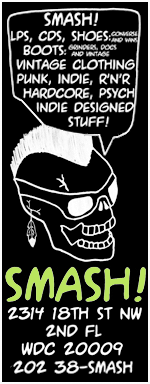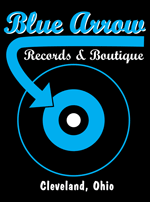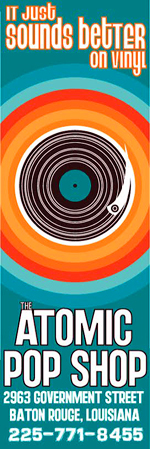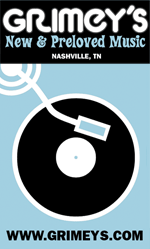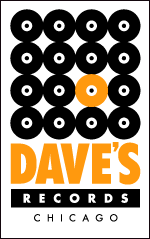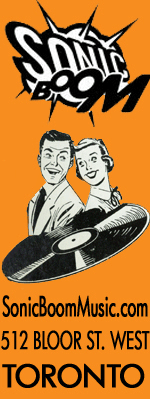
David Lee Roth was Thee Consummate Showman of the Hair Metal era. With Roth you got the whole shmeer; a natural-born ham and song and dance man, he would gladly have set himself alight and turned flaming cartwheels over the squat Michael Anthony if that’s what it took to keep Diamond Dave in the limelight. Not for nothing did the one-man parade once say, “The world’s a stage, and I want the brightest spot.”
Diamond Dave’s fashion sense may have been deplorable (I’m looking at a photo of him wearing leopard-print spandex leotards and a chest-pelt-revealing v-neck t-shirt complete with—yes, the t-shirt—suspenders), but he more than made up for it by being rock’s preeminent komiker, or comedian. Forever “on,” and with a touch of the old-school vaudevillian in him, you got the sense Roth would have been just as comfortable playing the Borscht Belt as he was playing rock’n’roll. This made him a refreshing anomaly in a genre that depleted the world’s stockpile of hair spray yet still took itself very, very seriously. Thanks to David “I don’t feel tardy” Roth, Van Halen wasn’t just the premier hair metal band—or metal band, period, for that matter—of its time; it was the funniest one (“Have you seen Junior’s grades?”) as well.
And I suppose still is, since Roth rejoined Van Halen in 2006—21 years after departing in 1985, unhappy with the band’s pop turn, adoption of keyboards and synthesizers, and increasingly “morose” (his term) sound. During the interim the Dean Martin of Rock (what else are you going to call a guy who once quipped, “I used to jog but the ice cubes kept falling out my glass”?) released a series of increasingly less successful—grunge killed the vaudeville star—solo albums; put together a Las Vegas lounge act complete with a star-studded brass band and exotic dancers (whom Roth described as “so sweet, I bet they shit sugar”); hosted a radio show; and even worked a stint as an NYC EMT. I don’t think this was a poverty move; he probably just wanted to know how to resuscitate himself in the event of a coke-induced heart attack.
Not everybody liked, or likes, Roth’s comedic shtick. He’s been called a clown and a buffoon, and I distinctly recall Chuck Stairway to Hell Eddy deriding him for playing the fool. And the camp overdose that is “Just a Gigolo,” while obviously a spoof, didn’t exactly help. But I stand before you today—not literally, of course; I’m actually sitting on my ass in my Vinyl District cubicle decorated with an autographed photo of Punky Meadows—to declare Roth a great man and comedic genius. Who besides a true komiker could quip, “Money can’t buy you happiness, but it can buy you a yacht big enough to pull up right alongside it”?
But none of this answers the question: Could the guy make a decent solo album? 1986’s Eat ‘Em and Smile was both his first full-length solo LP and his most successful, rising to #4 on the Billboard charts while also winning kudos from the critics. Except, unfortunately, from the only critic who really matters—yours truly. (Yes, I am delusional.) A mix of hard rock—with lots of guitar pyrotechnics ala Eddie Van Halen thanks to the showboating Steve Vai—lounge, jazz, blues, and speed metal, Eat ‘Em and Smile is one eclectic LP. Too eclectic, if you ask me. Diamond Dave once said, “The problem with self-improvement is knowing when to quit.” And the same goes for trying to shove too many disparate genres onto a 10-track LP.
Eat ‘Em and Smile—and Roth’s talking about eating humans, as his painted cannibal face on the album cover makes clear on—features a pair of campy lounge tunes, “I’m Easy” and “That’s Life.” The former is a hurried-up blues featuring horns, one fantabulous Vai solo, and—that’s about it, actually. The lyrics aren’t particularly funny, Roth isn’t as hyperactive as usual, and while “I’m Easy” isn’t a bad song per se, there’s just not much there. “That’s Life” is much better, with its big drums, soulful female backing vocalists, and horns, and Roth really throws himself into it, vamping it up and belting it out like his t-shirt-with-suspenders-wearing soul depends upon it, right down to the bit of scat singing at the end.
I still haven’t decided whether Roth and Company’s manhandling of “Tobacco Road” is flat-out wrong or doggone brilliant. They push the old jalopy to speeds it was never intended to go, and Vai is no blues guitarist, and the results are bizarre, to say the least. Vai’s big power chords fit in, but his wild interjections sound out-of-place, as does his fret-destroying solo. That said, Roth is in manic mode, and the song has a primal power that it’s impossible to deny. Meanwhile, “Ladie’s Nite in Buffalo?” is a mid-tempo number with a jazzy vibe, with Dave taking an understated approach to vocals and Vai playing it very low-key until mid-song, when he plays a solo that reminds me more of Steely Dan than Van Halen. It’s no big thrill—much like Buffalo itself—but “Ladies’ Night” isn’t a complete bummer either.
“Goin’ Crazy” sounds like Van Halen, albeit far from Van Halen at their best, from its guitar intro to Roth’s cries and mad libs (“you’re messin’ with the Mayor’s daughter… oh no!”) to Vai’s very Eddiesque big solo. On the downside, the melody’s nice if a bit overfamiliar sounding, and what’s with the synthesizer? Not only is Jesse Harms’ playing uninspired, the very presence of a synth is odd given that Roth’s disdain for such high-tech gadgetry was one of the reasons he left Van Halen in the first place. “Shyboy” also has Van Halen written all over it, and fortunately it’s a better tune than “Goin’ Crazy,” even if its chorus is rather annoying. But forget the chorus and pay attention to Roth’s spirited vocals (“Wooooow! Oooooh! Ahblegiut!!” are his great opening lines), Vai’s frenetic voodoo boogaloo on guitar, and Greg Bissonette’s frantic drum pummel, and what you’ve got is one very good song.
The Aerosmith-meets-Van Halen pastiche that is “Bump and Grind” doesn’t impress me much, from its cliched lyrics (come on Dave, you’re a funny man, remember?) to its clunky melody, and not even Vai’s mind- and note-bending guitar solo and Roth’s vocals can save it. The bridge is nice, but it’s a bridge from nowhere to no place, and instead of asking “Where’s that confounded bridge” like Robert Plant in “The Crunge” you’ll find yourself asking, “Where’s the confounded song?” “Elephant Gun” is one of the LP’s highlights, thanks to its breakneck speed, Vai’s “I just set my guitar on fire with my fingers!” solo, and Bissonette’s staccato drums. Meanwhile, Roth is letting out screams, hitting the high notes, and shouting, “Bang!” In short, he nails it, especially when he cries, “Don’t try to use that thing on me!”
“Big Trouble” is the LP’s highlight, a mid-tempo hard rocker about a guy named Joe with lyrics worthy of Diamond Dave (“One night he just disappeared/And all we found was his hat in a clearing/Down by the 7-11/Folks cried, someone said he died/But I know Joe didn’t go to… Heaven, no”). The song pounds its way into your heart, what with Vai declining to play the wildman until his space-is-one-very-loud place solo and Roth shutting it down with a “What do you say? We… go… lookin’?”
As for the LP’s hit, “Yankee Rose,” it’s about the Statue of Liberty, which is not an auspicious sign. It’s very VH and I love its opening guitars, Diamond Dave’s chat with Vai’s talking (and yuk-yukking) guitar, and the way he calls the statue “the original good time girl.” True, the chorus is insipid city (“She’s a vision from coast to coast/Sea to shining sea/Hey sister you’re the perfect host”), but “Yankee Rose” boasts a good melody, Roth and the backing vocalists are in good voice, and I love the way Roth says, “Here’s the National Anthem, here” just before Vai launches into one spazztastic guitar solo that’s the aural equivalent of a daredevil pilot doing every impossible maneuver in the book. While it’s hardly a compliment, “Yankee Rose” may be the least offensive piece of patriotic gore I’ve ever heard.
And that’s it. I wish I could say I love Eat ‘Em and Smile, but you can’t win ‘em all. Call it a cautionary tale. Roth’s “cannibal LP” proved—along with Van Halen’s equally middling 5150 from the same year—that what everybody but Diamond Dave and Ed Van Halen knew was true; they needed one another, the way a cannibal needs A1 Sauce. Eddie provides the meat; Roth, that consummate showman, provides the flavor. Or to employ a different metaphor, Van Halen constructs the perfect stages for Diamond Dave to turn his spastic cartwheels on. Apart, they followed their worst impulses, not to mediocrity exactly, but to a city much like Buffalo. Long may you run, Dave, with a martini glass with a lid and a sippy straw to keep the ice from falling out.
GRADED ON A CURVE:
B-






















